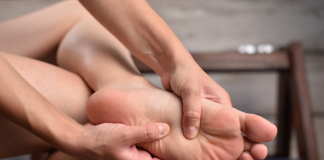Popular posts
3 Financial Considerations to Make Before Buying a Home
When you think about buying a home, it's easy to get caught up in what a home would mean for you and your family,...
What do consumers expect from modern credit cards
A credit card is a convenient means of payment that gives the user complete freedom to make purchases. You can pay for goods and...
AMAZON ASSOCIATES DISCLOSURE
dailybayonet.com is a participant in the Amazon Services LLC Associates Program, an affiliate advertising program designed to provide a means for sites to earn advertising fees by advertising and linking to Amazon.com.
Clicking on an Amazon link from dailybayonet.com does not increase the cost of any item you purchase.
We will only ever link to Amazon products that we think our visitors may be interested in and appreciate learning more about.
Research and Rarity: The Keys to Successful Gold Coin Sales in...
Brussels, a city steeped in history and recognized for its long-standing affinity with precious metals, is a thriving center for gold coin trading. In...
Tips for Making Your Home More Sustainable and Efficient
As a homeowner, there are lots of different ways that you can improve your home with technology, making it more efficient and sustainable. These...
Top 13 LinkedIn Video Downloader
Over the years the app that has been becoming very popular for browsing jobs and making connections is none other than LinkedIn. It has...
Adam Weitsman Net Worth, Career, Early Life, Personal Life (2024)
Though Adam Weitsman is a famous personality, those who don't know about him let me first introduce him. Adam Weitsman is an American entrepreneur,...
Best 3D art outsourcing companies | TOP-13
The field of game development is always changing. It combines creativity and technology to create exciting games.
3D art is very important in this...
Maggie Wheeler Net Worth, Early Life, Career, Personal Life (2024)
American actress Maggie Wheeler was born on August 7, 1961, in Manhattan, New York. Maggie Wheeler is a woman of extraordinary achievements, having worked...
How long Do you Sleep on Trazodone – Detailed Analysis( 2024)
Depression and anxiety have become disturbing talk for the modern generation. Medicines like Trazodone help to combat the disorders of depression and insomnia caused...
How to Stop feet Tingling at Night – Complete Overview
Feet tingling is a medical issue, and there are many reasons why people experience feet tingling. One such reason is sometimes we do not...
Wayne Newton Net Worth, Career, Personal Life, and Disease
Carson Wayne Newton, aka The Midnight Idol, is famous around the globe for his magical voice. The veteran singer has been enjoying worldwide fame...
Mira Murati Net Worth, Career, Personal Life, and More (2024)
Mira Murati is a well-known name in the field of Artificial Intelligence. She is a great personality who started her career as a Mechanical...
Benefits of Peppermint Tea for Women: 7 Top Perks
Peppermint tea is made of healthy extracts. For ages, people have been drinking this tea for health benefits. Apart from these benefits, it is...
Haley Kalil Net Worth: Science Graduate Turned Into a Supermodel
The gorgeous American model with her pouty lips and crazy social presence became a global icon over the last five years. Ever since her...















